New Photo Exhibit on Manhattanville Campus Shows the Experience of Community Health Workers During the Pandemic
Opening night for the exhibit is June 14 at The Forum on Columbia's Manhattanville campus.
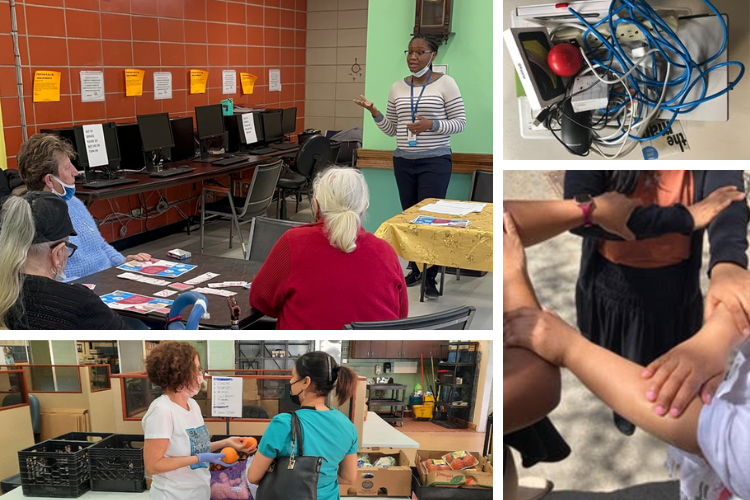
On June 14, a new exhibit, #TrustWorkers PhotoVoice Exhibit, will open at The Forum on Columbia's Manhattanville campus. It offers a look at the lives of an under-reported and essential group in the health care system: Community Health Workers (CHWs). The twist? The exhibit is created by CHWs from all over New York City, using their own stories and photos to illustrate their collective experience.
Community members, medical stakeholders, policymakers, and CHWs themselves are invited to an opening night celebration and to visit The Forum through the end of July to take in these important stories. You can see a few examples of photos and stories from the exhibit at the end of this article.
The #TrustWorkers Photo Voice Exhibit is a project led by The Trust Project at INCITE, an interdisciplinary center for empirical, community-based research at Columbia. The Trust Project is funded by a two-year Mellon Foundation grant for the study of trust and mistrust of science and experts.
To learn more about Community Health Workers and the exhibit, Columbia Neighbors sat down with Cristian Capotescu, Mellon Postdoctoral Scholar at INCITE, and Danielle Tomson, a PhD candidate at he Columbia Journalism School who is a fellow at The Trust Project.
EVENT INFORMATION
"Our main question since the fall has been: How do communities of color relate to the medical system? And, of course, there's a lot to talk about," Capotescu said. "There's a sense that trust in the medical system, in science, in state institutions, and in democracy is in crisis. Through various forums and conversations at the community level, we've partnered with Bronx Community Health Network, a provider in the Bronx, and other community partners."
What is a Community Health Worker?
Capotescu: They are a group of people that work between the medical profession and patient communities. They facilitate and negotiate the transfer of knowledge and relationships between hospitals, doctors, nurses, and the patients that use those services.
They're also involved in many more community-based services like transportation, provision of food, food stamps, access to technology, access to government services. They have a variety of tasks on their plate and they equip communities with knowledge about them.
They are like trusted messengers. There's a big push from the Biden administration to increase confidence in vaccines and the medical system, so we need those trusted messengers.
Tomson: We so often think of information and health care as institutions or places you go to receive services. I think the interesting thing we've observed about CHWs is that they are offering continuity of care, not just within the medical system, but within other systems of welfare and well-being, whether that is food stamps or trash pickup or neighborhood nutrition. All sorts of things about health care we don't think about because it isn't in a hospital. It's not just a place you go, it's a person you've known for years or have a continuous relationship face-to-face and in-person.
What is the focus of the exhibit?
Capotescu: This exhibit is all about CHWs and their stories. It tries to capture stories through their eyes about what their work entails and what it is like to work at the intersection of these institutions, communities, and spheres of society.
We'll have Opening Night on June 14 and it will run through the end of July at The Forum on the Manhattanville campus and we're inviting stakeholders from different levels of community, policy, academia, and journalism to have a moment of exchange and engagement.
We want people to have an unlikely conversation about some of the deficiencies in the medical system and some of the problems that CHW's conquer in the work, so we can convince people to make a difference, to get more funding, support, better training, and visibility...so CHW's aren't treated as an institutional after-thought.
What is the PhotoVoice technique?
Capotescu: We're using a method, very loosely, called PhotoVoice. Essentially, PhotoVoice is a picture that is taken in a moment or situation that depicts a certain relationship from the perspective of those who took the picture. It is accompanied by a text that provides a texture and context to make tangible what the picture is about. It is sort of like a photo essay.
We've been doing a series of workshops with CHWs. The first session was a training session, where we explained the PhotoVoice method and what the project is about. In the second session, we gathered the material they produced and discussed it in a group setting. There's a bit of guidance from our side during the process while they polish their stories. We've done this now with 60 CHWs. Many of them come from almost everywhere in New York City.
Read the stories of three Community Health Workers below, and make sure you stop by the exhibit beginning June 14 at The Forum, 601 W 125th St.
Jaunia Coombs-Clark
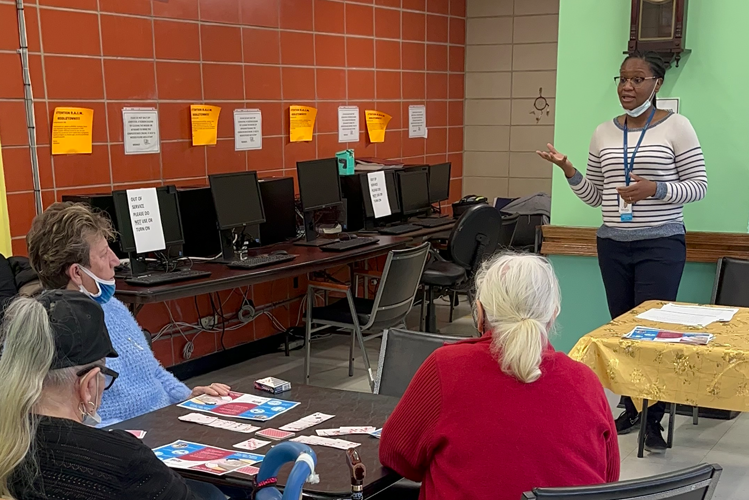
"The first photo is of me conducting a health presentation to a group of seniors. This group showed me how important it is to have trust and 'buy-in' with the community. The first time I did a presentation, they barely interacted with me, and it seemed like they were uninterested in what I had to say. The next time I went to do a presentation, they were much more open with me because they were comfortable. I was no longer a stranger disrupting their routine, but someone they could trust and accept information from. They answered questions and shared their own health tips and personal things from their lives.
"Trust within the community isn’t something that is automatically given. It may take several interactions with an individual or a group before they can openly accept that you are there to help or share information."
Elidieth Stern
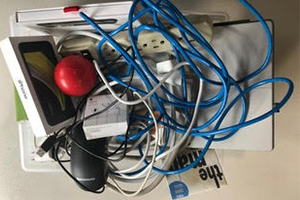
"What I am showing here are feelings about technology before and after the start of the pandemic. Working from home was overwhelming at first. Among other challenges, there was finding an area to set up a desk and chair, knowing what to plug into where, dealing with laptop and phone issues and spotty internet service, adapting to new protocols and procedures, and at times having feelings of isolation.
"I thought about our participants not having the tech tools to communicate with their doctors, family, and friends. Many participants shared that they were alone, afraid to go out, and disconnected from family and social activities."
Eduardo E. Giolitti
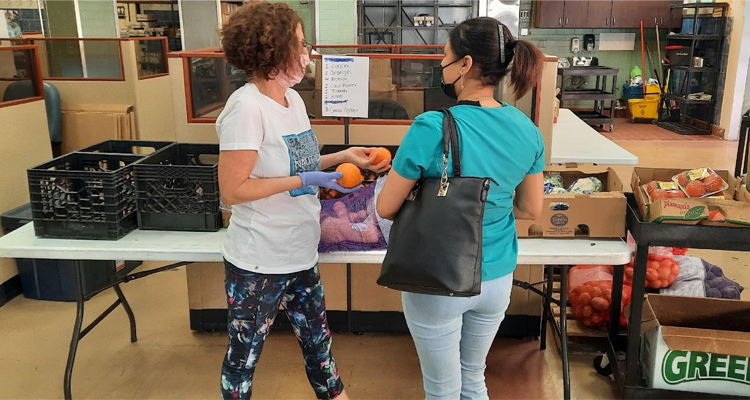
"These pictures are about personal experiences related to the trust found between the members of a community and their CHWs. When the people in the community we serve know that we can provide them with food assistance that allows them to put healthy food on their tables for their families, they trust us.
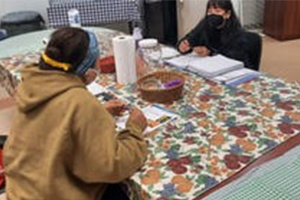
"I once gave a talk about healthy food choices and the effects of sodium on health to a group of ten people. The participants were focused and attentive, and I realized that their trust in me as their CHW also gave them confidence that the information I provided was beneficial for their health. Many community members benefit from receiving education from us related to healthy lifestyles and how to eat more nutritious food. We also support our community in managing their housing problems and refer them to health centers to receive treatment.
"With all the resources we offer, our patients and clients realize that our interest is that they gain the tools they need to have a good quality of life for themselves and their families. This is how community members develop trust in their CHWs, who care deeply for their community."
Marielena Chacón
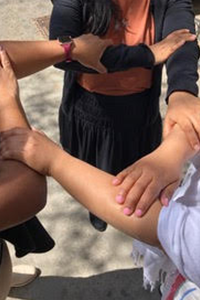
"CHWs have a special opportunity to meet families where they are. We meet them at their home or in their community, wherever they feel comfortable. We meet families outside their workplace, in their local laundromat, or between jobs at the train station. CHWs like me make sure that the families we serve feel supported, heard, and seen. We meet them where they are because we are like them. We are members of the same communities. We are also parents, and we have dealt with the medical system and the educational system ourselves. And some of our children are children with special healthcare needs as well.
"We build on that trust by being there and understanding their individual struggles. CHWs stand not above them but with them. We share our personal knowledge and the knowledge we have gained in our training. CHWs and families are equally invested stakeholders in the commitment to improving ourselves and our children’s outcomes. We all benefit when our communities are stronger and healthier. I thought about the question of how we CHWs develop trust with families. I decided to pose the question to one family I worked with. Both parents told me that they felt working with a CHW was like working with an ally. They had found someone who was there to support them and offer guidance through systems that are often hard to navigate. So, the idea that CHWs are partners with families reaching their goals became clear to me.
"This picture represents how CHWs and caregivers are linked together and how we learn from each other. Sometimes, CHWs lead, and sometimes, CHWs follow the family’s lead. This is how we make our communities stronger and healthier. One family at a time."
You can view these stories and the rest of the exhibit at The Forum on Columbia's Manhattanville campus from June 14 to the end of July. More information here.